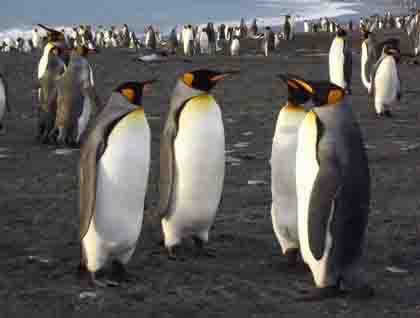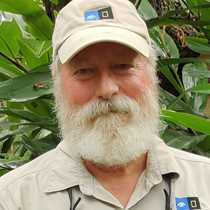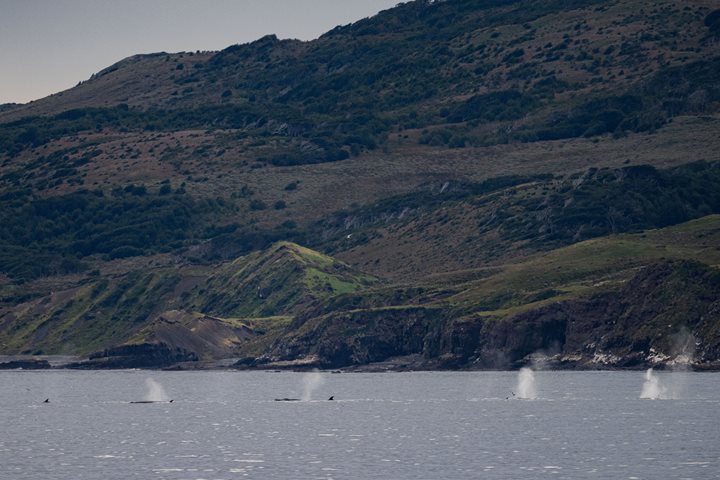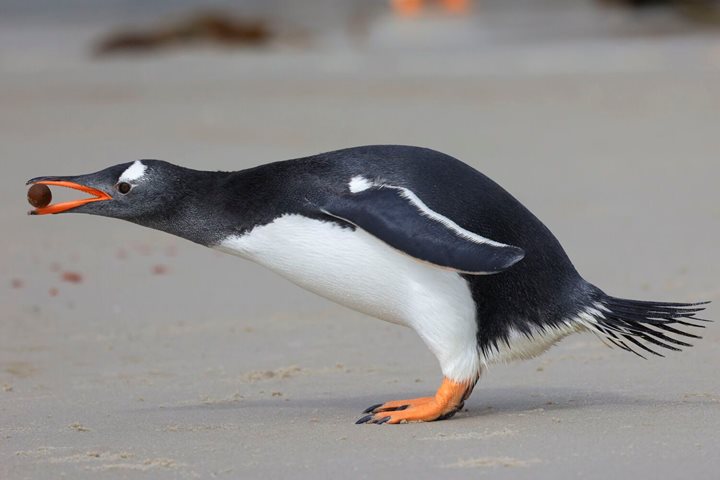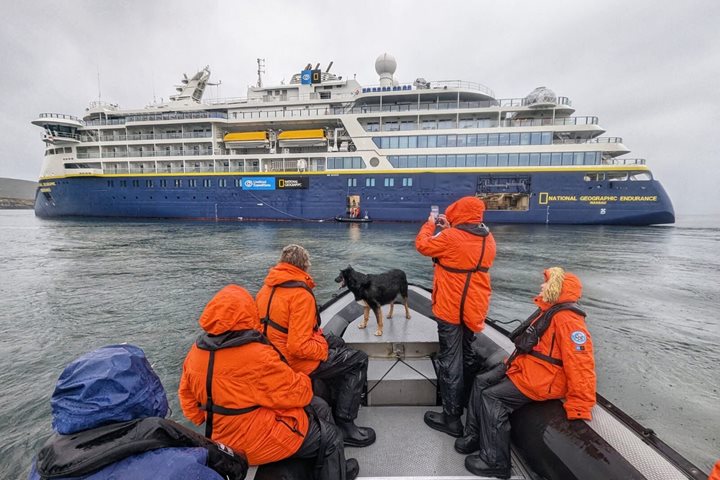Early this morning, we sailed around the easternmost point of South Georgia and had to dodge and weave our way through icebergs. Most of these huge grounded bergs had come from a tabular berg known as B-17 that broke off an ice shelf in Antarctica nearly 15 years ago. A large piece of it drifted into this region last year and grounded on the shallow water off Cooper Island. It has since broken into numerous smaller bits, which are still quite huge compared to our ship, and these bits will eventually disintegrate and disappear. But, for the time being these tabular bergs are stuck here at South Georgia.
Our vessel continued around to the northern side of the island and just before sunrise, we anchored off Gold Harbour. Several of us among the natural history staff think Gold Harbour is the best place on the island. Taking advantage of the timing of our arrival, we offered a pre-dawn landing for those wishing to catch the early sun in one of the most photogenic places imaginable. Most of us went ashore on a long curving beach with a backdrop of snow-covered alpine mountains. Oh, and tens of thousands of king penguins. These were our first king penguins, the most colorful of them all, and everyone was duly impressed by their welcome given us on the beach. Of course, there was also an impressive assortment of gentoo penguins, skuas, giant petrels, pintail ducks, sheathbills, shags, light-mantled albatrosses, elephant seals, and fur seals. The king penguins were our focus, but it is truly hard to resist the cute little fur seal pups. After returning to the ship for breakfast, we came back ashore for the rest of the morning and spent more time at this wonderful site. About half of the complement of guests opted to hike around the penguin colony, through masses of tussock grass (in some areas inhabited by fur seals) and around to the lagoon underneath the Bertrand Glacier at the east end of the bay. The weather changed continually during this hike, but we were ready for anything and no one complained.
During lunch, we sailed back to the easternmost extremity of the South Georgia mainland and anchored at Cooper Bay. We went ashore at Albatross Bay and walked along the open shoreline in and around beaten-down tussock mounds, so made by countless thousands of fur seals crushing the tops as resting places. Many of the fur seal pups appeared younger than the ones we enjoyed this morning, and if possible, were even more appealing. More elephant seals were also encountered scattered about the area. This protected bay is the best place to see the dynamic little macaroni penguins. From the Zodiacs, we got close views of many macaroni penguins on the shoreside rocks and we could easily inspect their colourful golden head crests. They are named for the English ‘fops’ (also known as “Macaronis”) of the 18th century who copied the garish clothing of Italy and wore outrageous feathers in their hats.
In the evening, when we left Cooper Bay, the ship returned to the region filled with tabular bergs from the broken up B-17 ice monster. The bergs were now much more conducive for photography in daylight, and the waters were made even more impressive by the uncountable thousands of prions that flew past the ship. It has been estimated that there may be 20 million pairs of prions that nest on South Georgia and it was very believable after the scene we saw here with our own eyes. It had been a long and very fulfilling day and it was amazing to realize this was just our first day in South Georgia.

